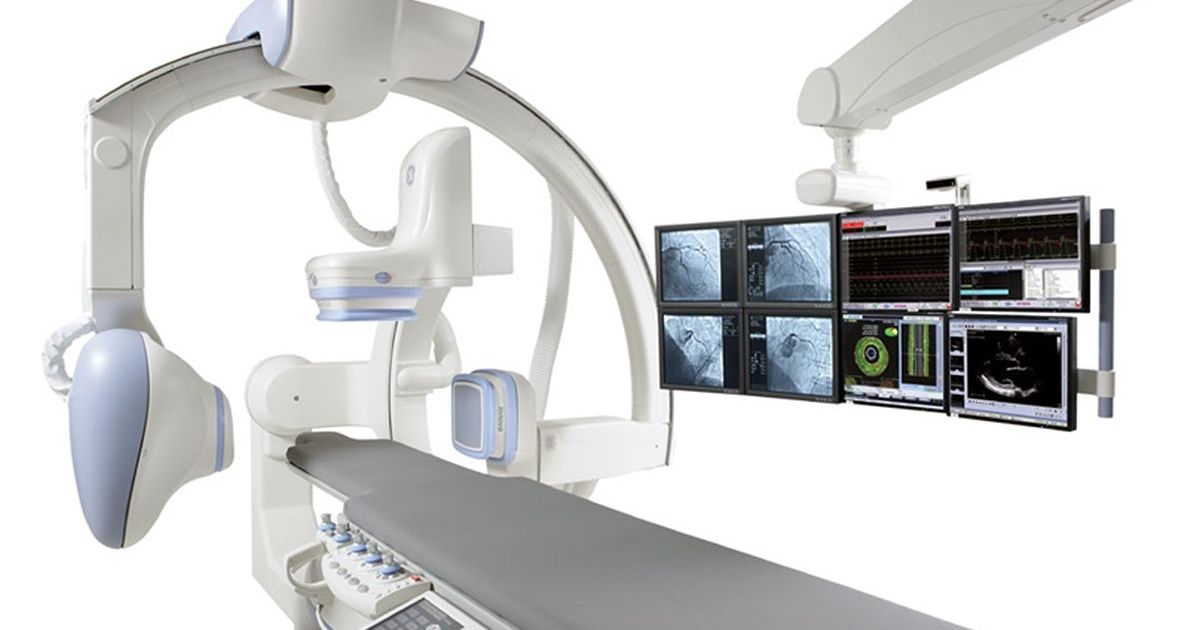We help healthcare facilities buy/sell imaging equipment, service and parts while lowering costs and improve quality for a better patient experience.
We help healthcare facilities buy/sell imaging equipment, service and parts while lowering costs and improve quality for a better patient experience.
What is angiography? It is an examination of blood vessels

What is angiography? It is an examination of blood vessels, using x-rays to view the veins and arteries which has previously been injected with radiocontrast media. The procedure is used to identify abnormalities and their location, enabling doctors to study blood vessels in different parts of the body for further analysis. The radiocontrast media is injected to increase clarity in artery and vein images.
Coronary Angiography (CAG)
To perform coronary angiography, a small catheter will be inserted in an artery in the groin or wrist until the end reaches the coronary artery. General anesthesia is not required, only local anesthesia is used. A small amount of radio contrast media will be injected in to the coronary artery. Meanwhile, x-rays imaging will be used to record images of each coronary artery.
Symptoms: When should you get angiography?
- Severe oppression in the chest, as if being pressed by a heavy object.
- Difficulty in breathing, excessive sweating, exhaustion, heart palpitation, dizziness, and light-headness.
- Pain or numbness, spreading to the arms, shoulders, and jaw.
- Patients with a history or risk of the ischemic heart such as patients with diabetes, hypertension, hyperlipidemia, a family member with ischemic heart history, obesity, as well as those who smoke or lack of exercise.
- Patients whose abnormality has been previously detected by other procedures such as electrocardiography, echocardiography, exercise stress test, etc.
Preparation for Coronary Angiography
- At least 4 – 6 hours of nothing per oral
- Patients with routine medication should discuss with the doctor if it should be continued or suspended prior to the procedure.
- Inform your doctor in advance if you have allergies to any medications or seafood to prescribe an antihistamine.
- Blood tests should be completed with results such as renal function test, red blood cell function test, electrolytes blood test.
- Lung x-ray and electrocardiography should be completed.
- Use the toilet prior to the procedure.
Coronary Angiography Procedure
A catheter will be inserted via these 2 options, either the groin or wrist area. Doctors will determine a suitable method for each patient.
- The wrist or groin area will be sterilized using antiseptic and covered with a sterile cloth.
- The doctor will inject local anesthesia at the insertion site. Inform your doctor immediately if any symptom, such as chest pain or nausea, is detected.
- A small catheter will be inserted through a tube guide at the wrist or groin until the end enters the desired coronary artery.
- The doctor will inject radiocontrast media into the coronary artery while recording images from various perspectives using x-ray imaging. While the radiocontrast media is being injected, patients might experience 10 – 15 minutes of hot flashes.
Practices after Coronary Angiography
Catheter insertion via the wrist
- Apply pressure to stop the bleeding with a tourniquet. Once the bleeding is stopped, the tourniquet will be removed by the nurse. Patients are not allowed to remove the tourniquet by themselves without the doctor´s permission.
- After the coronary angiography, patients can sit up or stand up. Food and water are allowed.
Catheter insertion via the groin
- Apply pressure to stop the bleeding in the groin area for approximately 15 – 30 minutes. Once the bleeding is stopped, the wound will be covered with an adhesive plaster bandage to prevent further bleeding. Initially, a sandbag (approximately ½ - 1 kg.) should be used to apply pressure and stop the bleeding.
- Do not bend, sit up, or stand up without the doctor´s permission.
- Patients can eat and drink after the angiography.